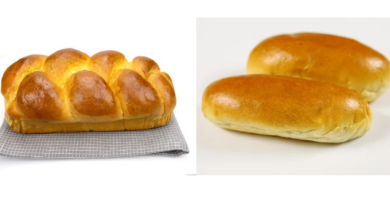How To Tell If Your Brioche Is Cooked – A Simple Trick That Works Every Time!
What To Know
- The crust of a well-baked brioche should be a beautiful golden brown hue, with a slightly crispy exterior and a soft, yielding interior.
- It is crucial to monitor the brioche closely during baking and remove it from the oven as soon as it is cooked through.
- Allow the brioche to rest in the pan for a few minutes before inverting it onto a wire rack to cool completely.
Brioche, the delectable French pastry renowned for its buttery richness and airy texture, demands meticulous attention to detail during baking. Determining the perfect moment to remove it from the oven can be a culinary conundrum. This comprehensive guide will empower you with the knowledge and techniques to confidently ascertain the doneness of your brioche, ensuring impeccable results every time.
1. The Temperature Test
Inserting a digital thermometer into the center of the brioche provides an accurate reading of its internal temperature. For optimal results, aim for a temperature of 190-200°F (88-93°C). At this point, the brioche will be cooked through but still retain its tender crumb and slight chewiness.
2. The Crust Check
The crust of a well-baked brioche should be a beautiful golden brown hue, with a slightly crispy exterior and a soft, yielding interior. Avoid overbaking, as the crust will become too hard and the crumb will dry out.
3. The Toothpick Test
Insert a toothpick or skewer into the center of the brioche. If it comes out clean, without any wet batter or crumbs adhering to it, the brioche is fully cooked. This simple test provides a quick and reliable indication of doneness.
4. The Jiggle Test
Gently shake the brioche pan. If the brioche jiggles slightly, but does not collapse or wobble excessively, it is close to being done. Continue baking for a few more minutes until the toothpick test confirms its readiness.
5. The Sound Test
Tap the top of the brioche lightly with your finger. If it sounds hollow, it is likely cooked through. However, if it sounds dense or thudding, it may require additional baking time.
6. The Size Test
Brioche will rise and expand during baking. When it is fully cooked, it will have reached its maximum size and will no longer continue to rise. Keep an eye on the brioche during the final stages of baking to gauge its progress.
7. The Experience Test
With practice, you will develop an intuitive sense for determining the doneness of brioche. Observe the brioche closely as it bakes, noting its color, texture, and behavior. Over time, you will become adept at recognizing the subtle cues that indicate perfect cuisson.
The Finishing Touch: Rest and Enjoy
Once your brioche is cooked, allow it to rest for a few minutes before slicing and serving. This will allow the juices to redistribute, resulting in a moist and flavorful crumb. Pair your brioche with your favorite toppings, such as butter, jam, or whipped cream, and savor the fruits of your culinary labor.
What People Want to Know
Q: Can I overbake brioche?
A: Yes, overbaking brioche can result in a dry, tough crumb and a burnt crust. It is crucial to monitor the brioche closely during baking and remove it from the oven as soon as it is cooked through.
Q: Why is my brioche still doughy inside?
A: Underbaking brioche can lead to a doughy or gummy texture. Ensure that the brioche reaches an internal temperature of 190-200°F (88-93°C) and passes the toothpick test before removing it from the oven.
Q: How can I prevent my brioche from collapsing after baking?
A: Brioche can collapse if it is not allowed to cool properly. Allow the brioche to rest in the pan for a few minutes before inverting it onto a wire rack to cool completely. This will help the structure to set and prevent deflation.

